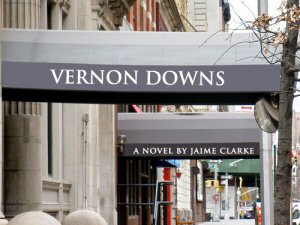 I feel as if I’ve gone through all the stages of grief reading this book:
I feel as if I’ve gone through all the stages of grief reading this book:
Denial: I’m not really doing this, right?
Anger: See Part 1 reaction, please.
Bargaining: “If I read one more chapter, I can have a glass of wine, and this will all go away and I can go back to reading real books . . . ”
Depression: “Oh my god. This was published and people read it. Like, for fun. For enjoyment. What’s the point any more? I can’t believe I brought a child into the kind of world where people like reading about emotionally abusive, repulsive relationships. Where’s the wine again?”
Acceptance: “It’s over, it’s really over! I still have to write about it, but I never have to read it again! I don’t care that other people read this, right? And that maybe feminism is dying?”
So here we are at last. I’ve accepted that Pia is a unicorn, that she’s carrying Dragos’s über-weird dragon-baby, and that Dragos is just going to inform her that they’re getting married after yet another bout of ultra-aggressive and strangely boring sex, and that the book will end with her slipping a giant diamond on her finger. For realsies.
I hate this book with the fiery passion of a thousand exploding suns, if you needed it spelled out. I hate it so much that I don’t really have anything productive to say about this last third. It was predictable and infuriating at the same time.
I can tell you with assurance, dear readers, that it will be many a year before I read another romance novel. I loathed Dragon Bound and even the tiny bits that were amusing couldn’t save the gag-inducing whole.
I’m glad I read it, though, because I like to uphold my claim to be an omnivorous reader (even though omnivorous is taking on all kinds of new meanings thanks to the spectacularly awful ‘devouring’ scenes in Dragon Bound), and because now I’ll never wonder if I’m missing out by skipping the Romance Buffet.
To entertain you, I will now cast the movie version of Dragon Bound. You’ll have to click the links for pictures because I am way paranoid about posting copyrighted images. My apologies to all of you, dear actors, for associating you, even fictitiously, with this book.
Pia: Kate Mara
Dragos: Jason Momoa (Khal Drogo on Game of Thrones. I don’t watch Game of Thrones, but good lord is hard to not know about it.)
Rune, Dragos’s second-in-command and best bro, despite the episode in which Dragos almost kills him for conducting self-defense training with Pia: Brad Pitt circa Legends of the Fall
Tricks, the perky, tiny, Fae PR person: Kristin Chenoweth. Honorable Mention: Kristen Bell.
Graydon, another one of Dragos’s bros, the one who actually likes Pia, despite annoying habit of calling her “Cupcake” : Tyrese Gibson (yeah, I’m ignoring the physical description. I’m bored with all the tan/tawny-haired guys.) Honorable Mention: Tahmoh Penikett.
Urien, the Dark Fae King or Lord of the Sith or whatever: Tom Hiddleston (extra apologies to you, Mr. Hiddleston, because of all your fine Shakespeare work.)
Aryal the Harpy, by far the most interesting unexplored character: Eva Green.
Pia’s dead unicorn mother: Connie Neilsen
Quentin, Pia’s only friend, dreamy, mysterious, and possibly half-Elf: Lee Pace
That was pretty fun! Like I said, I’m glad I read this, even if I hated it. I liked the whole reading-with-others-separately experience, so much so that I’m going to host my own (VERY DIFFERENT) read-along in 2014. All of 2014. Guess what has twelve parts and a few characters who fly?
Stay tuned, dear readers.
In the meantime, perhaps the other readers-along have something more intelligent to say about this last third of the book:
 A tip o’ the hat to my friend Kate, who pointed me to a podcast about the most fascinating story in this already-fascinating book a couple months ago.
A tip o’ the hat to my friend Kate, who pointed me to a podcast about the most fascinating story in this already-fascinating book a couple months ago.







